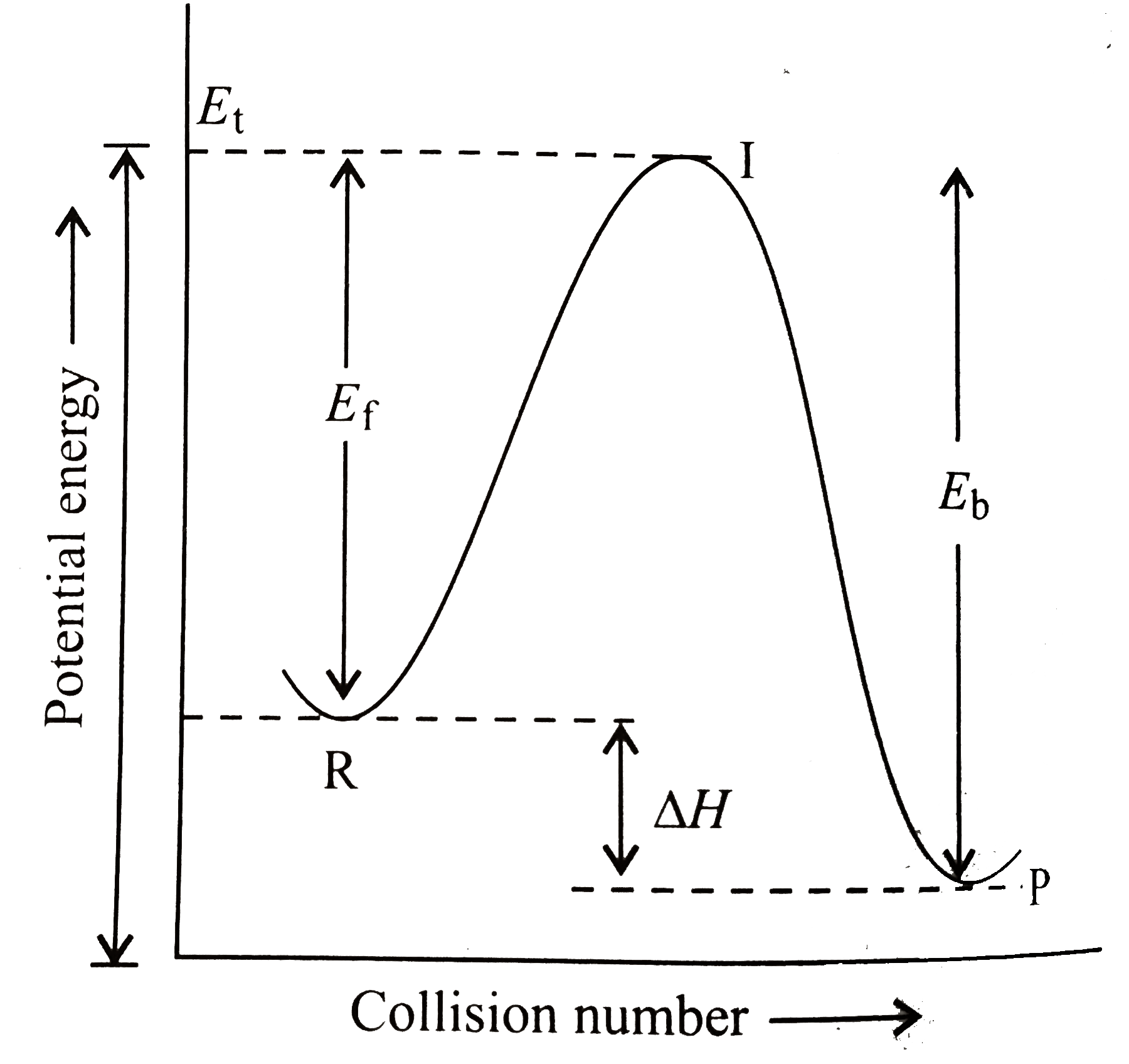The rate constant is given by the equation k=P.Ze−Ea/RT. Which factor should register a decrease for the reaction to proceed more rapidly?
T
2
E
P
The correct Answer is:C
k=p.Z.e−Ea/RT, in this equation k is inversely related to E. so decrease in E will result in increase of k.
Topper's Solved these Questions
- BOOK - VMC MODULES ENGLISHCHAPTER - CHEMICAL KINETICS EXERCISE - Level-250videos
CHEMICAL KINETICS
- BOOK - VMC MODULES ENGLISHCHAPTER - CHEMICAL KINETICS EXERCISE - Level-2 ( Numerical Value Type for JEE Main )15videos
CHEMICAL KINETICS
- BOOK - VMC MODULES ENGLISHCHAPTER - CHEMICAL KINETICS EXERCISE - Level-0 (Long Answer Type )6videos
CHEMICAL KINETICS
- BOOK - VMC MODULES ENGLISHCHAPTER - CHEMICAL EQUILIBRIUMEXERCISE - IN-CHAPTER EXERCISE - G10videos
CHEMICAL EQUILIBRIUM
- BOOK - VMC MODULES ENGLISHCHAPTER - CHEMICAL THERMODYNAMICS EXERCISE - IN - CHAPTER EXERCISE - L10videos
CHEMICAL THERMODYNAMICS
Similar Questions
In the Arrhenius equation: k=Aexp(−Ea/RT), the rate constant
View SolutionA colliison between reactant molecules must occur with a certain minimum energy before it is effective in yielding Product molecules. This minimum energy is called activation energy Ea Large the value of activation energy, smaller the value of rate constant k. Larger is the value of activation energy, greater is the effect of temperature rise on rate constant k.

Ef= Activation energy of forward reaction
Eb= Activation energy of backward reaction
ΔH=Ef−Eb
Ef= threshold energy
The rate constant of a certain reaction is given by k=Ae−Ea/RT
(where A= Arrhenius constant). Which factor should be lowered so that the rate of reaction may increase?View Solution
Knowledge Check
- Question 1 - Select One
The temperature dependence of the rate of a chemical reaction is given by arrhenius equation, k=Ae−Ea/RT. Which of the following graphs will be a striaght line?
AIn A vs 1/TBIn A vs EaCIn K vs 1/TDIn k vs −Ea/R
Which factor affects the velocity constant k of a reaction ?
View SolutionRate of reaction is given by the eqution : Rate = k[A]2[B]. What are the units for the rate and rate constant for the reaction?
View SolutionArrhenius studies the effect of temperature on the rate of a reaction and postulted that rate constant varies with temperature exponentially as k=AeEa/RT . Thuis method is generally used for finding the activation energy of a reaction. Keeping temperature constant, the effect of catalyst on the activation energy has also been studied.
The pre-exponetial factor in the Arrhenius equation of a first order reaction has the unit :View SolutionArrhenius studies the effect of temperature on the rate of a reaction and postulted that rate constant varies with temperature exponentially as k=AeEa/RT . Thuis method is generally used for finding the activation energy of a reaction. Keeping temperature constant, the effect of catalyst on the activation energy has also been studied.
If the rate of reaction doubles for 10∘C rise of temperature form 290K to 300K, the activation energy of the reaction will be approximately :View SolutionArrhenius studies the effect of temperature on the rate of a reaction and postulted that rate constant varies with temperature exponentially as k=AeEa/RT . Thuis method is generally used for finding the activation energy of a reaction. Keeping temperature constant, the effect of catalyst on the activation energy has also been studied.
If x is the fraction of molecules having energy greater than Ea it will be given by :View SolutionThe rate of reaction increases isgnificantly with increase in temperature. Generally, rate of reactions are doubled for every 10∘C rise in temperature. Temperature coefficient gives us an idea about the change in the rate of a reaction for every 10∘C change in temperature.
Temperature coefficient(μ)=Rate constant of(T+10)∘CRate constant atT∘C
Arrhenius gave an equation which describes aret constant k as a function of temperature
k=Ae−Ea/RT
where k is the rate constant, A is the frequency factor or pre-exponential factor, Ea is the activation energy, T is the temperature in kelvin, R is the universal gas constant.
Equation when expressed in logarithmic form becomes
logk=logA−Ea2.303RT
Activation energies of two reaction are Ea and Ea' with Ea>E'a. If the temperature of the reacting systems is increased form T1 to T2 (k' is rate constant at higher temperature).View SolutionThe rate of reaction increases isgnificantly with increase in temperature. Generally, rate of reactions are doubled for every 10∘C rise in temperature. Temperature coefficient gives us an idea about the change in the rate of a reaction for every 10∘C change in temperature.
Temperature coefficient(μ)=Rate constant of(T+10)∘CRate constant atT∘C
Arrhenius gave an equation which describes aret constant k as a function of temperature
k=Ae−Ea/RT
where k is the rate constant, A is the frequency factor or pre-exponential factor, Ea is the activation energy, T is the temperature in kelvin, R is the universal gas constant.
Equation when expressed in logarithmic form becomes
logk=logA−Ea2.303RT
For a reaction Ea=0 and k=3.2×108s−1 at 325K. The value of k at 335K would beView Solution

